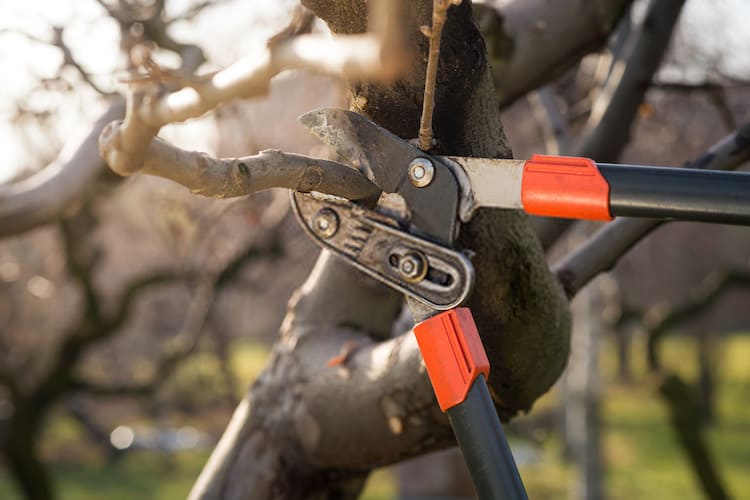Growing new branches or a new set of branches is a sign of vitality in tree plants. Gardeners and plant enthusiasts are always on the lookout to learn and understand how to make a tree grow new branches whenever they want to.
The good thing that there are actually a few ways you can make trees to develop new branches easily, and that is precisely what this article is all about.
If you are also wondering whether a full-grown tree can grow new branches, well, you are on the right side of the internet!
Let's get started!
Table of Contents
Do Grown Trees Grow New Branches?
Some gardeners wonder if a full-grown tree can grow new branches. They presume that the tree has reached its maturity and, as a result, can no longer grow any more plant parts. They also think that growing new branches is restricted to just young tree plants.
However, if you are wondering whether grown trees can grow new branches, the answer is yes. Full-grown trees can grow new branches if they are well taken care of and routinely pruned properly.
If you are interested in making your tree to grow new branches, then at that point, you must take your mind off the tree bearing more fruits. That is because a tree that is growing new branches would expend most of its energy on growing new branches.
But how does pruning trees or cutting branches make a tree grow new branches?
Well, cutting tree branches leads to the growth of new branches because you are not indiscriminately cutting the branches.
Instead, you are cutting off the branches’ main shoot. The main shoot is the part of the branch that has been receiving auxin in the optimal amount. Hence, it has grown the most, and most times, to the detriment of other plant parts.
How to Make A Tree Grow New Branches
To get a grown tree to grow new branches, all you need to do is to prune the tree. Now, we would be looking at how to go about pruning the tree so that new branches can grow.
That said, here's a step by step process of how to make a tree grow new branches:
Use the Appropriate Cutting Tools
When trying to make your tree plants grow new branches, the foremost thing to do is get the right tools for the pruning process.
Below are some of the tools you can use to prune your tree for new branches effectively.
Gardening Scissors: This is the most basic tool used in pruning trees to grow new branches. Gardening scissors share a similar semblance with scissors used in the kitchen. Both scissors function alike, just like any other type of scissors out there.
Gardening scissors has an oversized handle that is often made of plastic and comes in various bright colors. Its blade is usually small but very sharp for the kind of operation it is used for.
Gardening scissors are used when thin stems are being removed in the garden from young plants and flowers. They are not used for heavyweight jobs but for anything simple and light.
Gardening scissors also come in a large variety of lengths; there exist gardening scissors that are very long. These longer gardening scissors are usually long enough to reach into deeper areas of a plant without disturbing other branches or flowers.
Secateurs: Secateurs are no different from a pair of pruning shears. Although there are different types of secateurs, these different types share the same type of blades.
So when buying the appropriate cutting tools for making a tree to grow new branches, you can either buy a bypass blade or an anvil blade.
Secateurs with a bypass blade are ideal for fragile stems. This type of secateurs has similar blades with scissors and has no flat edges. The blades do not close up on top of each other; instead, they overlap each other.
Anvil blade secateurs are ideal for cutting woody stems. Woody stems are usually tough. Anvil blades have their top and bottom parts flat on one side. This feature helps them to be very useful in cutting woody plant stems, and it also prevents stem sticking.
Secateurs also come in different hands for people who are either right-handed or left-handed. Therefore, you can always effectively work with the tool using your dominant hand. It also comes in different sizes for making different types of cuts on tree plants.
Long-reach Pruners
Long-reach pruners are ideally used for what its name suggests: longer reach cuttings. Some long-reach pruners have telescopes on their handles, which enable one to reach deep into a plant and get the precise angle for cutting. It reduces errors to a great extent.
While long-reach pruners prevent you from getting closer to your plant, it also prevents you from getting scratched as well. Some long-reach pruners come with short handles and can be operated with a single hand, while some others come with longer handles, and can be operated with both hands.
Depending on the stress of cutting you are carrying out in your garden or home, you may be required to use one of these tools or use three of them together, simultaneously. Whichever way you choose to use these tools, you must ensure to sterilize each of the tools.
You can sterilize the tools by dunking them in an ethanol solution or an isopropyl alcohol solution. These solutions are usually between 70 to 100%.
You can also sterilize the tools by wiping them with a clean towel dipped into any of these solutions. This second method is a better method of sterilization because it enables you to patiently and carefully clean the blades, both inside and outside.
Cut Out Dead Parts
The next step after getting your appropriate cutting tools is to start cutting the branch. But you don’t just start cutting any branch you see because you have the right cutting tools. Before you start cutting out any branch, inspect the entire tree.
You are inspecting to spot unhealthy parts of the branch. Unhealthy or dead parts of a plant are detrimental to the overall growth of the plant. Such parts do not deserve another second on the tree.
So you start first by cutting out the dead parts of the tree. While cutting these parts, your cutting tool should be at 45 degrees. Depending on the thickness of the dead part, you can use gardening scissors, long-reach, or secateurs to cut.
An entire branch is not cut out except when the branch is totally dead from tip to the base; otherwise, the healthy parts should be left alone. If the entire branch is dead, you should remove it in its entirety, but you should leave the stem intact for growing new branches.
Since we are getting rid of dead parts of a tree, dead flowers are also removed now. They also contribute to slower growth of the rate of the healthier parts of a plant.
Dead flowers are lightweight; hence they can be removed with gardening scissors. Dead flowers are removed from trees by making a firm cut at the base of the stalk.
Start Cutting Out Branches
Once you have gotten rid of all dead parts of the plants, the next step is to take out older branches, because you want to make the tree grow new branches. The older branches are taken out in the order of longer branches down to the shorter branches.
For this stage, gardening scissors are not used. Instead, secateurs and long-reach pruners are used. The branches are cut back to a third of their initial length. That is, the older long branches are cut to become a third shorter than they were previously.
To get the exact the new length, you don’t cut the branch in a single swoop, instead of cut the branch in bits, taking one bit at a time until the exact length is achieved. While making the incisions, stick to angle 45 degrees at the base.
As a precautionary tip, while cutting the branches, ensure to stay as far away as possible from developing buds. They are of great importance and would bloom at the right time. Sterilize as you move from one step of the cutting to another.
Also, if perchance, you cut off an entire healthy branch by accident. Do not fret. You can use the cut-out branch to propagate new growth. This is also true for other parts of the plants, not just the branch.
Fertilize Immediately You Are Done Cutting
Because the goal of the entire process is to cut the branches in order to make a tree develop new branches, you should fertilize the tree plant immediately you are done cutting out the necessary plant parts.
The ideal fertilizer for this is an all-purpose, soluble fertilizer. But if the plant uses a different and special kind of fertilizer, then you should use that. The fertilizer applied would help ensure that the tree develop new branches.
Conclusion
To make a tree grow new branches require optimal care of the tree. If, after cutting a tree and you do not care for the tree, new branches may not grow, and if they do, they may not be as healthy as you hoped for.
When cutting the branches, always aim to cut less than the amount you need. This way, you can work your way down to the intended amount by trimming the branch bit by bit.
Ensure to follow the 45 degrees angle cut, and finally keep the cutting tools clean, even while still cutting. An unclear shear can transmit diseases from one plant part to another. I am sure you don’t want this. So keep it clean.
Hopefully, you now know how to make a tree grow new branches. Now, it's time to go and practice what you have just learned.






